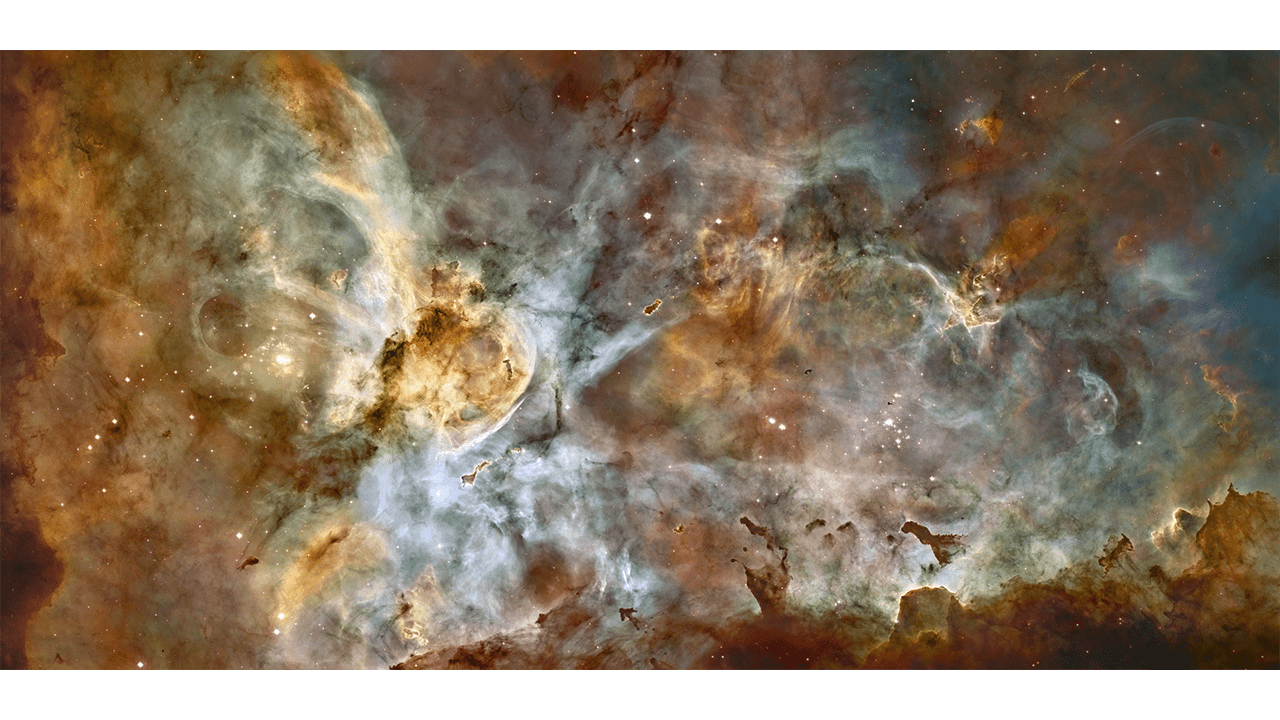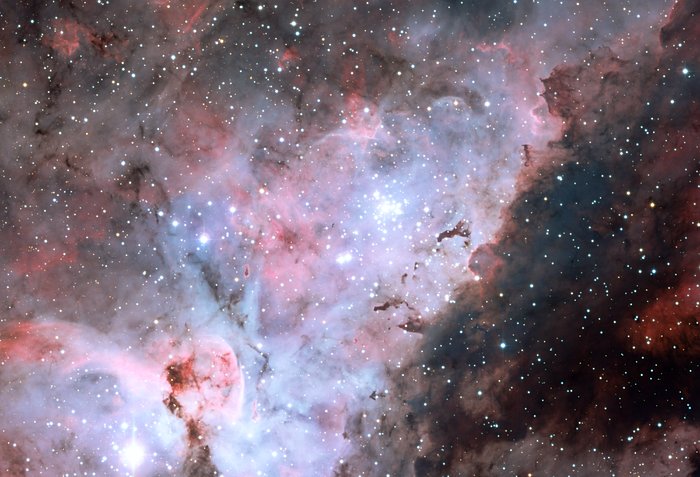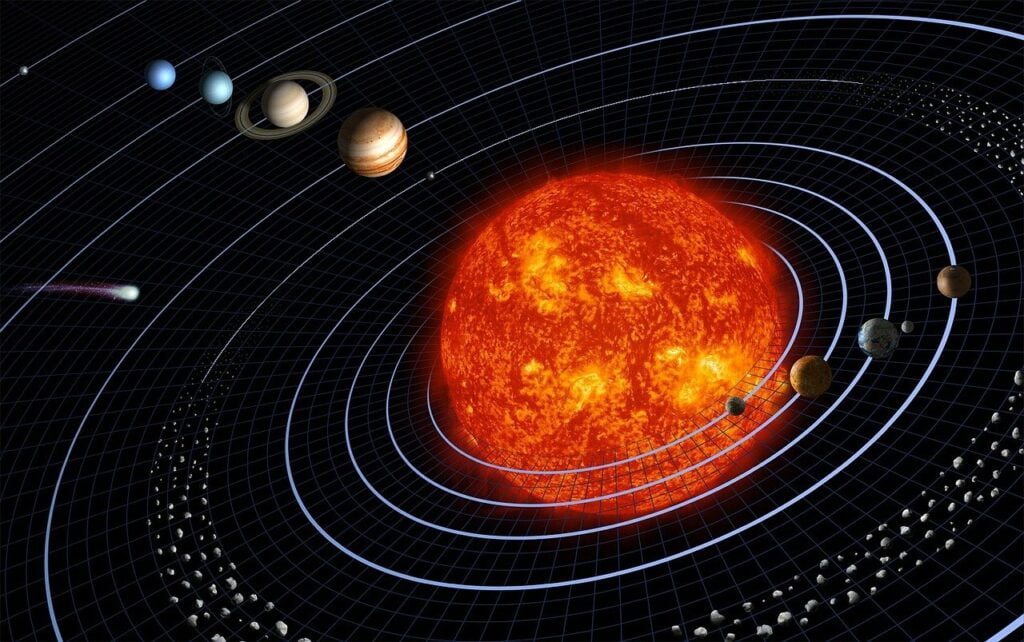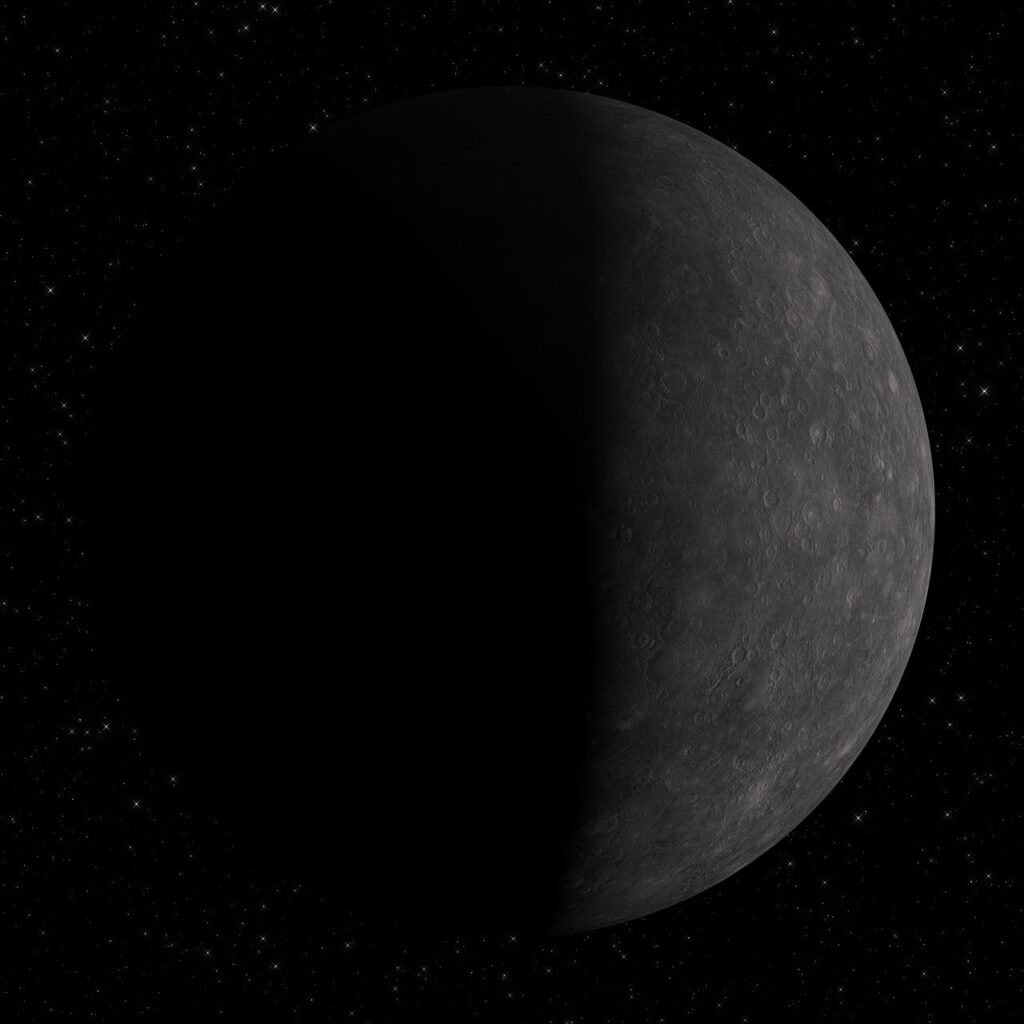
Introduction to The Carina Nebula
Soaring majestically in the southern skies, the Carina Nebula, also known as NGC 3372, captivates observers with its vibrant hues and dramatic structures. Located approximately 7,600 light-years away in the Sagittarius-Carina arm of our Milky Way galaxy, it stretches an astounding 300 light-years across, dwarfing even the famed Orion Nebula. Yet, despite its size and brilliance, the Carina Nebula remained relatively hidden for centuries due to its location in the southern hemisphere. Discovered in 1752 by French astronomer Nicolas-Louis de Lacaille, it’s only in recent decades that advanced telescopes have begun to unveil its true magnificence and scientific significance.
This celestial masterpiece is not just a breathtaking spectacle; it serves as a vital laboratory for astronomers, offering insights into the dynamic and often violent processes of star formation. Within its turbulent heart, colossal clouds of gas and dust give birth to new stars, some destined to become the most massive and luminous known to humankind. Understanding the Carina Nebula allows us to piece together the puzzle of stellar evolution, from the cradle of nascent stars to the explosive demise of supernovae.
Formation and Environment
The Carina Nebula’s origin story is intertwined with the violent events that sculpted our galaxy. Approximately 10 to 15 million years ago, a massive shockwave, likely triggered by the death of a nearby star, swept through the interstellar medium, triggering the collapse of vast gas clouds. This birthed the Carina Nebula, a turbulent region teeming with the raw materials for star formation.
The nebula’s chemical composition reflects its violent past. Hydrogen, the most abundant element, forms the bulk of the nebula, followed by helium. However, traces of heavier elements like oxygen, carbon, and nitrogen also exist, revealing the enrichment left behind by previous generations of stars. These elements play a crucial role in the formation of new stars and planetary systems.
Beyond its chemical fingerprint, the nebula’s environment is dominated by intense radiation and powerful winds emanating from its colossal inhabitants. The nebula boasts several massive stars, including the enigmatic Eta Carinae, a hypergiant thousands of times brighter than our Sun. These behemoths bathe the nebula in ultraviolet radiation, sculpting the dusty pillars and triggering further star formation. Additionally, their powerful winds carve through the gas, creating shockwaves and turbulence that influence the overall dynamics of the nebula.
The Carina Nebula’s story is not written solely in the visible spectrum. Multiwavelength observations paint a more comprehensive picture. Infrared telescopes pierce through the dust veil, revealing hidden stellar nurseries and newborn stars shrouded in their cocoons. Radio waves unveil the intricate network of magnetic fields that guide and shape the gas clouds. X-ray observations highlight the intense energy released by young stars and supernova remnants, showcasing the violent cycle of death and rebirth within the nebula.

NASA, ESA, CSA, and STScI
Star Formation
The Carina Nebula is a stellar breeding ground, teeming with activity. Throughout its vast expanse, pockets of dense gas and dust collapse under their own gravity, igniting the fires of star formation. These “star-forming regions” exist in various stages of development, each harboring unique populations of stars.
Some of the most iconic structures within the nebula are the towering pillars, sculpted by the erosive effects of stellar winds and radiation. These pillars may appear static, but within them, stars are actively forming. As gravity pulls the gas inward, dense cores begin to heat up, eventually reaching the critical temperature for nuclear fusion to ignite, marking the birth of a new star.
Clusters like Tr 14 and Tr 16 exhibit the diverse stellar populations born within the nebula. These densely packed groups contain young, massive stars that burn brightly and live fast, alongside less massive stars destined for longer lifespans. The interplay between these stars, their winds, and the surrounding gas creates a complex ecosystem where star formation thrives.
However, the most dramatic players in the star formation drama are the colossal stars residing within the nebula. These behemoths like Eta Carinae possess millions of times the mass of our Sun and shine with dazzling brilliance. Their immense gravity and energetic winds not only trigger star formation but also carve through the nebula, creating cavities and shaping its overall structure. Additionally, these stars face a precarious future, potentially ending their lives in spectacular supernova explosions that will further enrich the interstellar medium and influence future generations of stars.
Stellar Evolution and Death
The fate of stars born within the Carina Nebula is intricately linked to their mass. Stars like our Sun, classified as low-mass stars, will eventually shed their outer layers, forming planetary nebulae before ending their lives as white dwarfs. However, the story for the massive stars in Carina takes a much more dramatic turn.
Living Fast, Dying Young
Massive stars, born with ten or more times the Sun’s mass, burn through their fuel reserves at an accelerated rate, living fast and dying young. These stellar giants undergo dramatic changes throughout their evolution, releasing tremendous amounts of energy through stellar winds and radiation. They may even experience periods of extreme instability, like the enigmatic Eta Carinae, potentially culminating in colossal eruptions known as Luminous Blue Variable (LBV) outbursts. These outbursts can eject vast amounts of material back into the nebula, enriching the interstellar medium and potentially triggering further star formation.
Supernovae and Black Holes
When these massive stars reach the end of their nuclear fuel, they face a cataclysmic fate. Some will explode in spectacular supernovae, releasing incredible amounts of energy and forging heavier elements within their cores. These explosions leave behind neutron stars, incredibly dense remnants of the collapsed core, or even black holes, objects so massive that not even light can escape their grasp.
Sculpting the Nebula
Supernovae and LBV outbursts play a crucial role in shaping the Carina Nebula’s dynamic environment. The shockwaves they generate trigger further star formation while simultaneously carving out cavities and injecting the interstellar medium with enriched elements. These explosions provide astronomers with invaluable insights into stellar death and the creation of the elements that make up everything, including us.

Future Implications
The Carina Nebula remains an active area of research, offering scientists a unique window into the violent and beautiful processes of star formation and evolution. Ongoing observations with existing and upcoming telescopes, like the James Webb Space Telescope, promise even deeper insights.
New Discoveries
Future observations may reveal the secrets of stellar mergers within the nebula, potentially leading to the formation of even more massive objects. Studying the composition of dust clouds and planetary disks around younger stars could unravel the formation of planetary systems in such extreme environments. Additionally, understanding the impact of massive stars on their surroundings could shed light on the evolution of entire galaxies.
Beyond the Carina
Studying the Carina Nebula provides a crucial piece of the puzzle for understanding star formation and evolution throughout the Milky Way. By comparing it to other star-forming regions, astronomers can gain insights into the diverse mechanisms that govern the birth and death of stars across our galaxy. This knowledge informs our understanding of the overall evolution of the Milky Way and its future.
Conclusion
The Carina Nebula is a dynamic tapestry woven from the threads of life and death. From the delicate cradle of newborn stars to the explosive demise of supernovae, it showcases the full spectrum of stellar evolution. By unraveling its secrets, we gain a deeper appreciation for the violent beauty of the universe and our place within it. As we continue to explore this celestial masterpiece, the Carina Nebula will undoubtedly continue to reveal its wonders, shaping our understanding of the cosmos for generations to come.
You may also like
Mercury: The Closest Planet to the Sun
Venus: The Earth’s Twin or a Very Different Planet?
Mars: Comprehensive Exploration, unveiling the Mysteries
Jupiter: A Cosmic Giant – Symphony of Storms
Saturn: A Gaseous Giant with Enthralling Rings and Diverse Moons
Useful links
NASA:
The Carina Nebula: https://www.nasa.gov/image-article/nasas-webb-reveals-cosmic-cliffs-glittering-landscape-of-star-birth/
Chandra X-ray Observatory: Pillars of Creation in the Carina Nebula: https://chandra.harvard.edu/photo/2011/carina/more.html
Spitzer Space Telescope: Stellar Nursery in the Carina Nebula: https://www.spitzer.caltech.edu/image/ssc2005-12a1-carina-nebula
European Space Agency (ESA):
Hubble Space Telescope: Pillars of Creation in the Carina Nebula: https://hubblesite.org/contents/media/images/2007/16/2099-Image.html
Herschel Space Observatory: Unveiling the Hidden Stars in the Carina Nebula: https://sci.esa.int/web/hubble/-/40921-the-sky-around-carina-nebula
Japan Aerospace Exploration Agency (JAXA):
ALMA Telescope: Unveiling the Secrets of Star Formation in the Carina Nebula: https://www.nao.ac.jp/en/news/science/2023/20230628-alma.html


